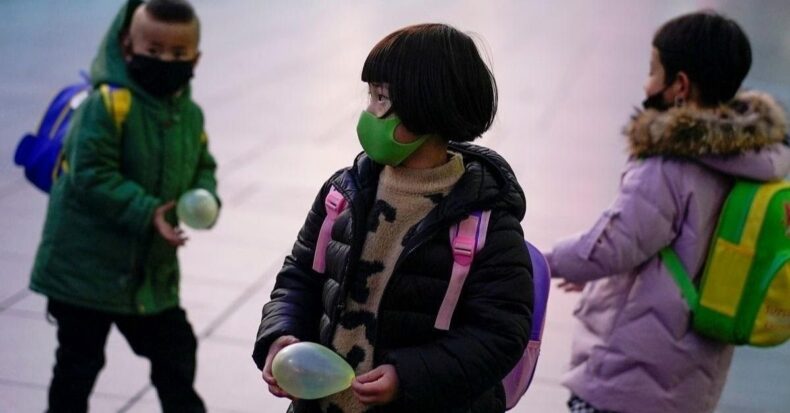China passes three child policy to fix its demographic crisis. The Law on Population and Family Planning will ease the financial burdens of childcare and eldercare; it aims at encouraging couples to have more children.
The National People’s Congress (NPC) passed the revised Population and Family Planning Law on Friday, relaxing the constraints on couples planning to have three children instead of the previous policies.
This decision came to ensure balanced population development after the 2020 census report, which possibly threatens China’s hopes of increased prosperity and global influence.
The announcement that families in China can have upto three kids came in late May.
Three-child policy in China
On July 20 this year, the ruling Communist Party mooted the plan to endorse a three-child policy relaxing the previous two-child law introduced in 2016 due to the shrinking working class, rising labour costs and a large ageing population.
The amendment passed by the Chinese Parliament allows all couples to have three children, and it includes replacing the “at a later time” with “at the appropriate time” in regards to the advice for couples to marry and have a child.
This change is made keeping in mind the earlier a couple decides to have their first child, the more time they get to plan and prepare for a second and a third child.
The document also mentions the efforts to create a new marriage and childbearing culture that will promote childbirth in the most conducive way.
The report emphasizes that people get married and have children at “the appropriate time “-that is, between 20 to 34 years.
China’s National Bureau of Statistics shows that people have their first child at an increasingly later age because they are getting married late compared with the people in 1990.
This progressive postponing of the age of marriage and childbirth has accelerated the decline in the fertility rate in women. However, this has been a universal trend and needs to be reversed to ensure a balanced population.
This law will supplement such couples with supportive measures like parental leave and childcare resources, which will include “finances, taxes, insurance, education, housing and employment, to reduce families’ burdens as well as the cost of raising and educating children.” reported the state media.
The state will also counter the long-standing discrimination against new mothers and most pregnant women at the workplace.
The 2020 Census says it all

About 12 million babies were born in the previous year, “the lowest number since 1961”, said the National Bureau of Statistics on May 11.
The new norm comes as the country records a dramatic decline in births; the change was approved in the wake of China’s population census, conducted after every ten-year interval.
As of May 31, 2021 report, the census was conducted by yet seven million census takers going door-to-door to provide the demographic information.
According to the census report, “around 12 million babies were born last year – a significant decrease from the 18 million in 2016, and the lowest number of births recorded since the 1960s.”
The population of China in 2020 is found to be 1.41 billion, which shows an increase of 72 million since the 2010 census.
Where 264 million are in the age group of 60 and over, which accounts for 18.70% of the population, found to be up by 5.44% since 2010, and 894 million people fell in the category of those in the age group of 15-59, accounting for 63.35% of China’s population that was found to be down by 6.79% since 2010.
According to this census, the workforce in China is down by 894 million and would even drop to 700 million by 2050.
An Unanticipated Fall in a Critical Demographic

The reason for such a steep and sudden decline in China’s workforce population is clearly to be blamed on its “one-child policy”.
According to Chinese officials, about 40 crore births have been prevented from its implementation for more than three decades.
China implemented its one-child policy in the late 1970’s enforced by former leader Deng Xiaoping which limited most couples to one child.
The procedure was defamed as it threatened people with fines and even loss of jobs and, in the most severe cases, forced abortions.
People in China started indulging in mass female foeticide, which leads to a massive imbalance in the sex ratio.
This policy was even hailed for a long time by the Chinese authorities complementing with claims of averting the nation from famines and water shortages.
Still, the fog cannot be dispelled from a fan. It was until 2016 that the ‘one-child policy’ was taken down.
Even the ‘two-child policy’ couldn’t help the ruling Communist Party balance the rapidly ageing population undermining economic growth.
This new ‘three-child policy’ change comes just after six years of the last change, and China hopes it will resolve their rising labour costs, shrinking working class, and ageing population.
As the new policy rolls out, the Chinese internet is flooded with mocks on the official calls of this “three-child policy”, scrutinizing the “one-child policy” with slogans like ‘Have babies or go to jail’.
These mocks have proved to be the exasperation that persists in mind with the one-child-policy propaganda that is often considered cruel. Even fake information like ‘Women who have three children die young’.













